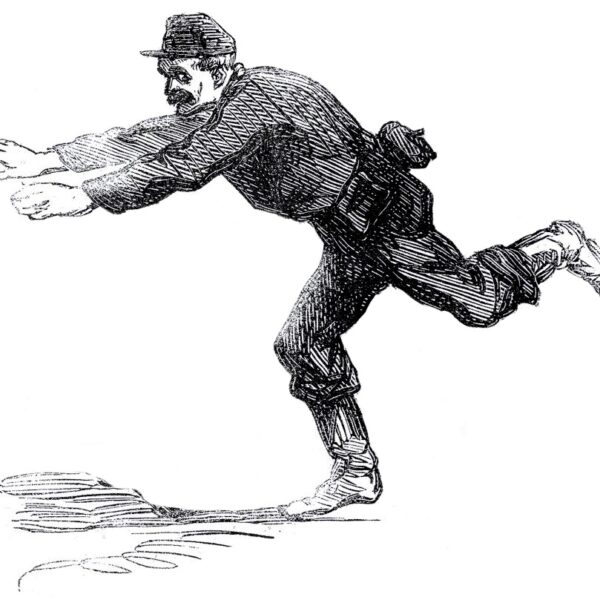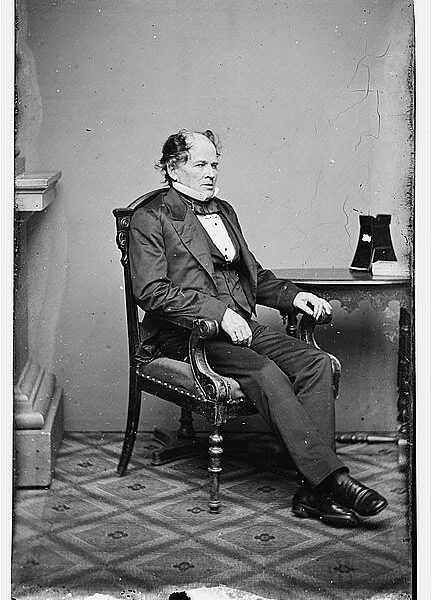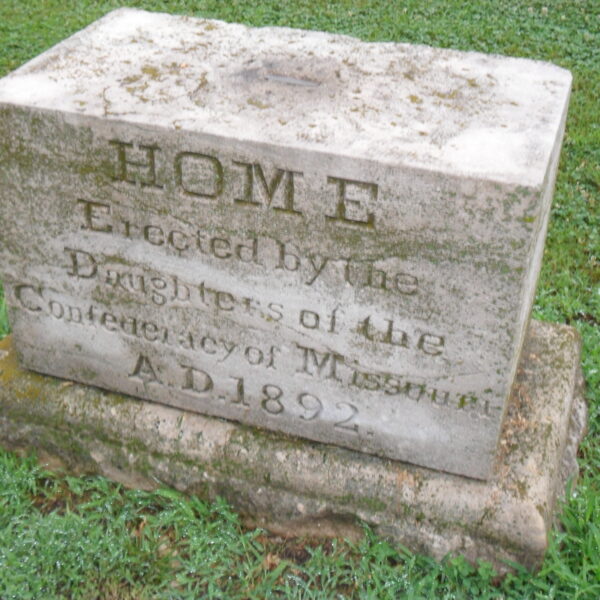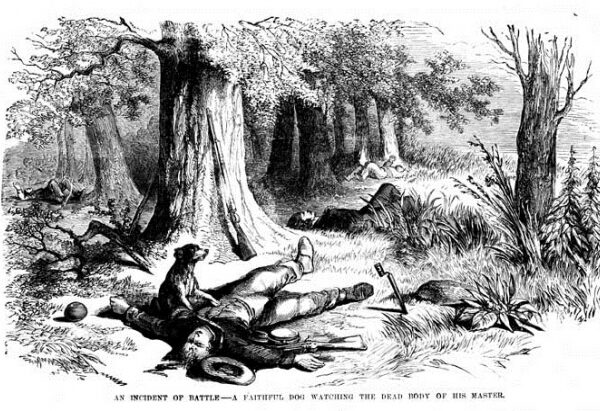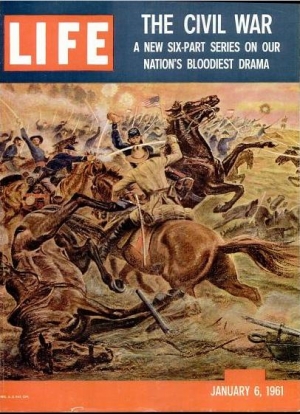
As we enter the second year of the Civil War Sesquicentennial, there is some comparison back fifty years to the centennial—be that just for nostalgia or for analysis. Allow me to offer a bit of the former with the later.
The covers of Life Magazine are like milestones of American pop-culture through the middle of the 20th century… well at least up to its end as a weekly in 1973. If it was important to Americans, it was on the cover of Life. As such, Life is a good sample set for how Americans looked, or were shown, the Civil War Centennial. Thanks to Google Books, one can survey an archive those old issues with ease.
Life began the centennial, much the same as our present periodicals did for the sesquicentennial, with a series introducing the Civil War. A six-part series started with the January 6, 1961 issue (cover featured left).
That’s a depiction of the Battle of Brandy Station. The cover actually folded out as the illustration spanned two full pages. Bruce Catton wrote the first installment, titled “Deeds of Glory” and lavishly supported with illustrations, providing vignettes of heroic actions from both sides of the war. Consider the audience, and ages of that target, as you browse that article.
Other installments in the series appeared in later issues—Sixteen pages of Life Paintings depicting the great battles; “The Soldier’s Life” by Bell Irvin Wiley; “The War that Changed War” by General James Gavin; “The Home Front” by Margaret Leech; and “The War Lives On” by Robert Penn Warren. These are certainly worth reading, and some reflection. Indeed the “great battles” illustrations are perhaps fodder for several posts about how we remember the Civil War (particularly the painting of The Crater). But none of these received cover support from the magazine.
Scanning through Life covers for the following years, the Civil War itself is not featured on the cover again during the centennial. Other subjects weighed heavier on American minds—the Kennedys, astronauts, Castro, sports figures, movie stars, and … more Kennedys. However, Lincoln sort of appeared on the cover of the February 15, 1963 issue.
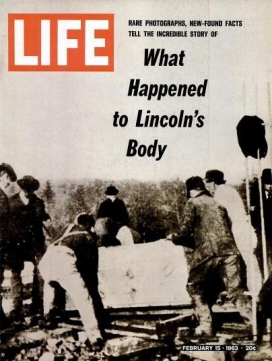
At perhaps the apogee of centennial events, while some were considering Gettysburg or perhaps Vicksburg in the first days of July 1963, this edition of Life sat on newsstands:
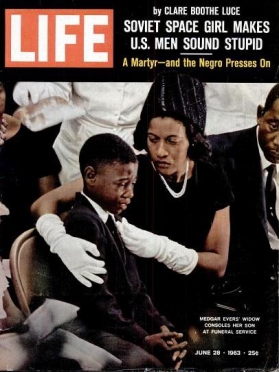
Look beyond the headline about the Soviet space program. Who’s on the cover? The widow and son of Medgar Evers, as Life covered the funeral of the murdered Civil Rights leader.
Lincoln returned to the cover on September 6, 1963, as the backdrop to a headline story.
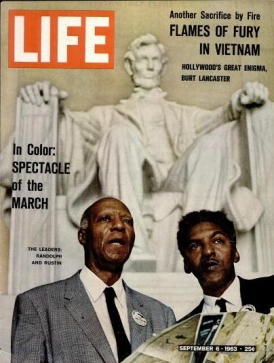
The headlines remind us of two themes coming to the fore during the 1960s—Civil Rights and the Vietnam War. Arguably both subjects had and have connections to the Civil War topic.
When the centennial for all practical matters came to a close in April 1965, Life featured one of its famous Vietnam War photo essays on the cover.
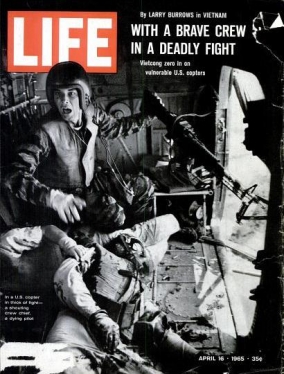
Cynically I would point out the rise in magazine prices from 20 cents up to 35 cents in just a few short years. However the covers also offer warning for us to avoid interpreting history through the microscope of our particular interests, lest we miss the broader story.
Yes, Life might have better connected the Civil War and current events in the 1960s. But would the average American of the 1960s be willing to look that far back for insight into their times? And can we say the same for our own times?
Craig Swain is a consultant from Virginia but is a native Missourian. His background includes a degree in history and service in the Army. Craig’s focus is the study of Civil War Artillery, which you can read about on his blog – To the Sound of the Guns.
Image Credit: Life Magazine and GoogleBooks.

